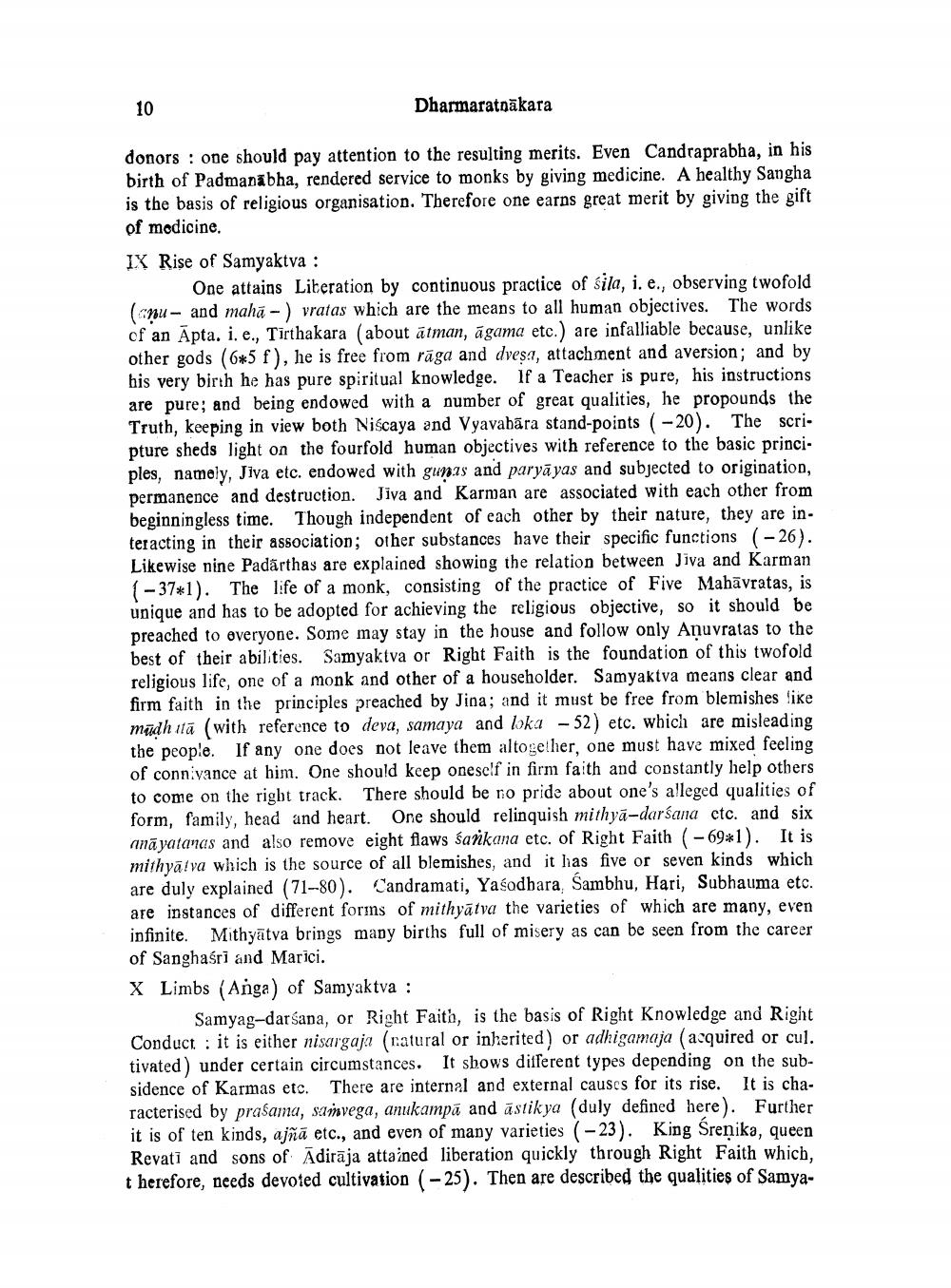________________
10
Dharmaratnākara
donors : one should pay attention to the resulting merits. Even Candraprabha, in his birth of Padmanabha, rendered service to monks by giving medicine. A healthy Sangha is the basis of religious organisation. Therefore one earns great merit by giving the gift of medicine. IX Rise of Samyaktva :
One attains Literation by continuous practice of sila, i. e., observing twofold (onu - and mahā - ) vratas which are the means to all human objectives. The words of an Apta. i. e., Tirthakara (about ātman, agama etc.) are infalliable because, unlike other gods (6*5 f), he is free from rāga and dvesa, attachment and aversion; and by his very birth he has pure spiritual knowledge. If a Teacher is pure, his instructions are pure; and being endowed with a number of great qualities, he propounds the Truth, keeping in view both Niscaya and Vyavahāra stand-points (-20). The scripture sheds light on the fourfold human objectives with reference to the basic principles, namely, Jiva etc. endowed with gunas and paryāyas and subjected to origination, permanence and destruction. Jiva and Karman are associated with each other from beginningless time. Though independent of each other by their nature, they are interacting in their association; other substances have their specific functions (-26). Likewise nine Padārthas are explained showing the relation between Jiva and Karman (-37*1). The life of a monk, consisting of the practice of Five Mahāvratas, is unique and has to be adopted for achieving the religious objective, so it should be preached to everyone. Some may stay in the house and follow only Aņuvratas to the best of their abilities. Samyaktva or Right Faith is the foundation of this twofold religious life, one of a monk and other of a householder. Samyaktva means clear and firm faith in the principles preached by Jina; and it must be free from blemishes like müdhita (with reference to deva, samaya and loka - 52) etc. which are misleading the people. If any one does not leave them altogether, one must have mixed feeling of connivance at bim. One should keep oneself in firm faith and constantly help others to come on the right track. There should be no pride about one's alleged qualities of form, family, head and heart. One should relinquish mithya-darśana ctc. and six anāyatanas and also remove eight flaws sarkana etc. of Right Faith (-69*1). It is mithyālva which is the source of all blemishes, and it has five or seven kinds which are duly explained (71-80). Candramati, Yasodhara Sambhu, Hari, Subhauma etc. are instances of different forins of mithyātva the varieties of which are many, even infinite. Mithyātva brings many births full of misery as can be seen from the career of Sanghaśrī and Marici. X Limbs (Anga) of Samyaktva :
Samyag-darśana, or Right Faith, is the basis of Right Knowledge and Right Conduct : it is either nisargaja (ratural or inherited) or adhigamaja (acquired or cul. tivated) under certain circumstances. It shows different types depending on the subsidence of Karmas etc. There are internal and external causes for its rise. It is characterised by prasama, samvega, anukampā and āstikya (duly defined here). Further it is of ten kinds, ajñā etc., and even of many varieties (-23). King Srenika, queen Revati and sons of Adirāja attained liberation quickly through Right Faith which, t herefore, needs devoted cultivation (-25). Then are described the qualities of Samya




